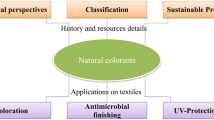Abstract
This study investigates the influence of carboxylic monomers, such as itaconic acid (IA), on the colloidal properties of the latexes made by semi-continuous emulsion copolymerization of styrene (STy) with n-butyl acrylate (BA). A number of copolymerization runs were carried out with different IA concentrations. The effect of functional monomer on the overall conversion, the colloidal properties of the latexes, and the distribution of the carboxylic groups (buried, particle surface and aqueous phase) were examined. The carboxylic groups present in the latexes were analyzed using conductimetric and potentiometric titrations. The behavior of the IA on the wet scrub resistance of highly pigmented paints for architectural coatings was examined and correlated with the distribution of the carboxylic groups. The results obtained showed that the properties of highly pigmented paints are greatly dependent on the amount and distribution of the carboxylic groups. The carboxylic acid distributed in the aqueous phase has a strong influence on the wet scrub resistance and on the characteristics of the final products.





Similar content being viewed by others
References
Oliveira, MP, Giordani, DS, Santos, AM, “The Role of Itaconic and Fumaric Acid in the Emulsion Copolymerization of Methyl Methacrylate and n-Butyl Acrylate.” Eur. Polym. J., 42 1196–1205 (2006)
Wildeson, J, Smith, A, Gong, X, Davis, HT, Scriven, LE, “Understanding and Improvement of TiO2 Efficiency in Waterborne Paints Through Latex Design.” JCT CoatingsTech, 5 32–39 (2008)
Fukuhara, D, Sundberg, D, “Latex Produced with Carboxylic Acid Comonomer for Waterborne Coatings: Particle Morphology Variations with Changing pH.” J. Coat. Technol. Res., 2 509–516 (2005)
Vorwerg, L, Gilbert, RG, “Electrosteric Stabilization with Poly(acrylic acid) in Emulsion Polymerization: Effect on Kinetics and Secondary Particle Formation.” Macromolecules, 33 6693–6703 (2000)
Khorassani, M, Afshar-Taromi, F, Mohseni, M, Pourmahdian, S, “The Role of Auxiliary Monomers and Emulsifiers on Wet Scrub Resistance of Various Latex Paints at Different Pigment Volume Concentrations.” J. Appl. Polym. Sci., 113 3264–3268 (2009)
Koh, AYC, Mange, S, Bothe, M, Leyrer, RJ, Gilbert, RG, “The Influence of Copolymerization with Methacrylic Acid on Poly(butyl acrylate) Film Properties.” Polymer, 47 1159–1165 (2006)
Vijayendran, BR, “Effect of Carboxylic Monomers on Acid Distribution in Carboxylated Polystyrene Lattices.” J. Appl. Polym. Sci., 23 839–901 (1979)
Fordyce, RG, Ham, GE, “Copolymerization. II. The Mechanism of Emulsion Copolymerization of Styrene and Itaconic Acid.” J. Am. Chem. Soc., 69 695–696 (1947)
Santos, AM, McKenna, TF, Guillot, J, “Emulsion Copolymerization of Styrene and n-Butyl Acrylate in Presence of Acrylic and Methacrylic Acids: Effect of pH on Kinetics and Carboxyl Group Distribution.” J. Appl. Polym. Sci., 65 2343–2355 (1997)
Santos, AM, Guillot, J, McKenna, TF, “Partitioning of Styrene, Butyl Acrylate and Methacrylic Acid in Emulsion Systems.” Chem. Eng. Sci., 53 2143–2151 (1998)
Reynhout, XEE, Beckers, M, Meuldijk, J, Drinkenburg, BAH, “Electrosteric Stability of Styrene/Acrylic Acid Copolymer Latices Under Emulsion Polymerization Reaction Conditions.” J. Polym. Sc., Part A: Polym. Chem., 43 726–732 (2005)
Lock, MR, El-Aasser, MS, Klein, A, Vanderhoff, JW, “Role of Itaconic Acid in Latex Particle Nucleation.” J. Appl. Polym. Sci., 42 1065–1072 (1992)
Willke, Th, Vorlop, KD, “Biotechnological Production of Itaconic Acid.” Appl. Microb. Biotechnol., 56 289–295 (2001)
Slawinski, M, Schellekens, MAJ, Meuldijk, J, van Herk, AM, German, AL, “Seeded Emulsion Polymerization of Styrene: Influence of Acrylic Acid on the Particle Growth Process.” J. Appl. Polym. Sci., 76 1186–1196 (2000)
Araújo, PHH, Sayer, C, Caldas, E, Santos, AF, Fortuny, M, “Investigation of Stabilization and Kinetics in the Semi-Continuous Emulsion Copolymerization of Vinyl Acetate and Butyl Acrylate Using Carboxylic Monomers.” Macromol. Symp., 245–246 61–67 (2006)
ABNT, NBR 15078 “Método para avaliação do desempenho de tintas para edificações não industriais—Determinação da resistência à abrasão úmida sem pasta abrasiva,” Rio de Janeiro, 2006
Khan, AK, Roy, BC, Dolui, SK, “Preparation of Core–Shell Emulsion Polymer and Optimization of Shell Composition with Respect to Opacity of Paint Film.” Prog. Org. Coat., 62 65–70 (2008)
Bajaj, P, Meenakshi, G, Chavan, RB, “Synthesis and Characterization of Methacrylic Acid-Ethyl Acrylate Copolymers.” J. Appl. Polym. Sci., 53 1771–1783 (1994)
Václavová, E, Hrivík, A, Chrástová, V, “Emulsion Copolymerization of Styrene and Butyl Acrylate with Itaconic Acid.” Makrom. Chem., 193 2243–2250 (1992)
Ceska, GW, “Carboxyl-Stabilized Emulsion Polymers.” J. Appl. Polym. Sci., 18 2493–2499 (1974)
Egusa, S, Makauuchi, K, “Radiation-Initiated Emulsion Copolymerization of Styrene and Carboxylic Acid Monomers.” J. Polym. Sci. Polym. Chem., 20 863–874 (1982)
Vanderhoff, JW, “The Making of a Polymer Colloid.” In: Poehlein, GW, Ottewill, RH, Goodwin, JW (eds.) Science and Technology of Polymer Colloid, p. 167. Martinus Nijhoff, The Hague, The Netherlands, 1983
Blackley, DC, Polymer Latices—Science and Technology, Vol. 1. Chapman & Hall, London, 1997
Kirsch, S, Pfau, A, Frechen, T, Schrof, W, Pföhler, P, Francke, D, “Scrub Resistance of Highly Pigmented Paints. A Study on Abrasion Mechanisms of Different Scrub Techniques.” Prog. Org. Coat., 43 99–110 (2001)
Author information
Authors and Affiliations
Corresponding author
Rights and permissions
About this article
Cite this article
Oliveira, M.P., Silva, C.R. & Guerrini, L.M. Effect of itaconic acid on the wet scrub resistance of highly pigmented paints for architectural coatings. J Coat Technol Res 8, 439–447 (2011). https://doi.org/10.1007/s11998-010-9317-7
Published:
Issue Date:
DOI: https://doi.org/10.1007/s11998-010-9317-7




